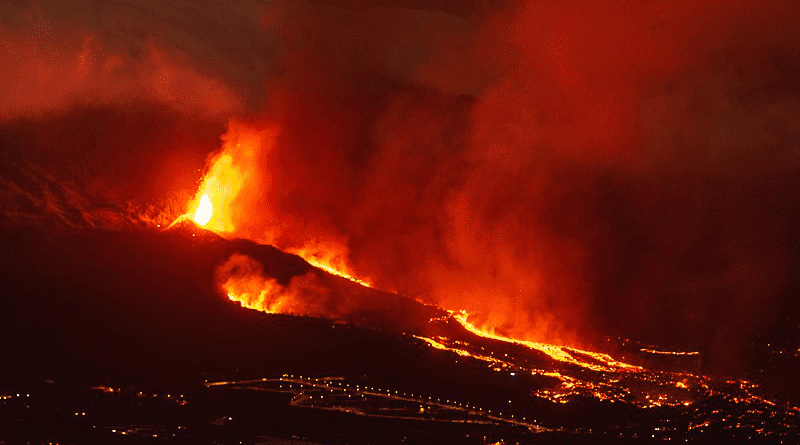Reactivation Of Cumbre Vieja Volcano Reveals Need To Rethink Forecasting And Hazards
In September 2021, after 50 years of relative rest, the Cumbre Vieja volcano in the Canary Islands erupted explosively and caused 400 million euros of infrastructure damage, demonstrating behavior at odds with that for basaltic volcanoes.
The event at Cumbre Vieja requires rethinking about forecasting and hazards, writes Marc-Antoine Longpré in a Perspective. He outlines findings from a preliminary analysis from Spain’s seismic monitoring network on Cumbre Vieja that suggest that the eruption had been preparing for 4 years, starting with an earthquake swarm in October 2017.
In hindsight, says Longpré, these discrete seismic swarms likely mark the earliest sign of volcanic unrest. Later in that four-year period, unrest accelerated to the point where an eruption seemed likely only 8 days before magma broke the surface in 2021. This information represents crucial information for eruption forecasting at quiescent volcanoes, says Longpré.
“With disaster come opportunities,” he writes. “Identifying and dissecting the reactivation of Cumbre Vieja, from its very inception, after five decades of quiescence, has tremendous value.”

